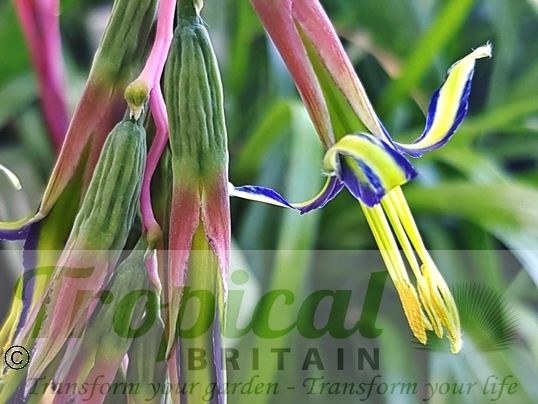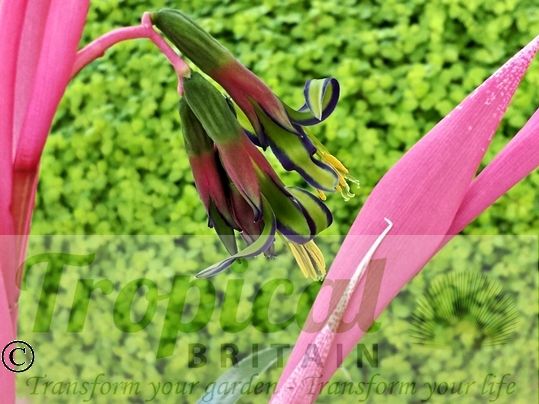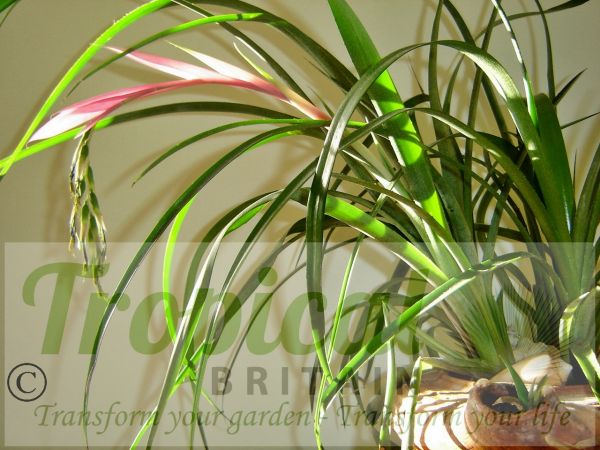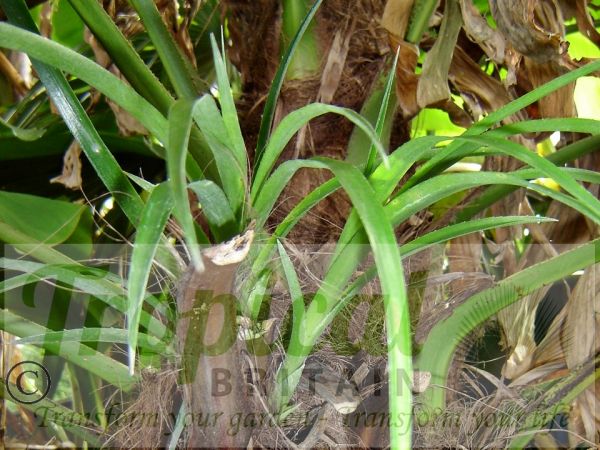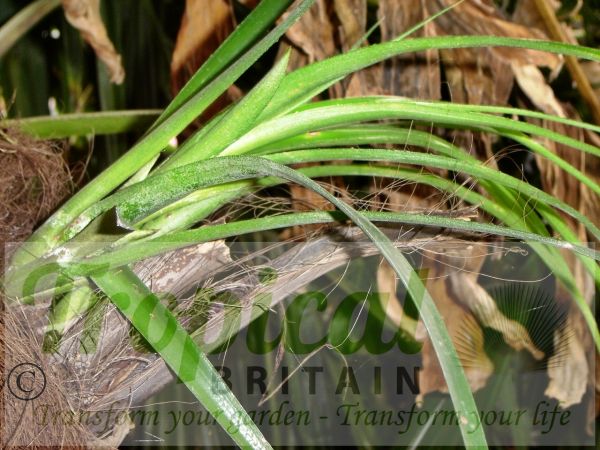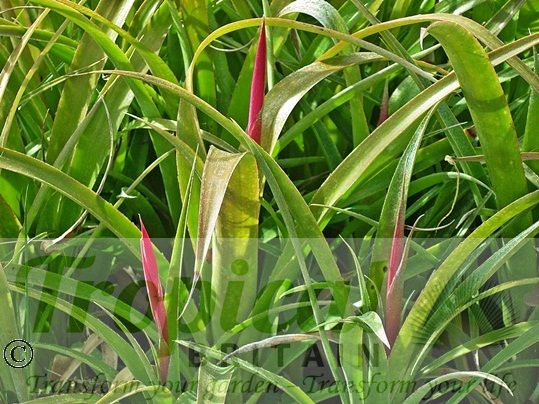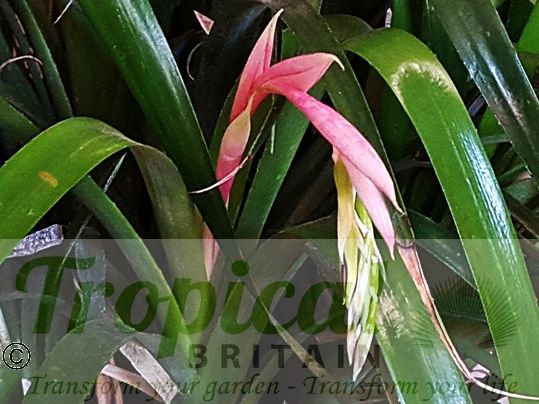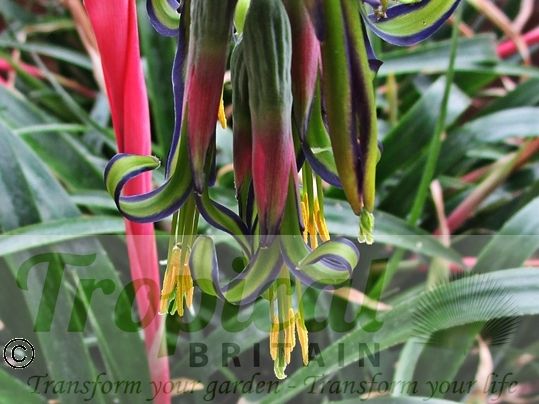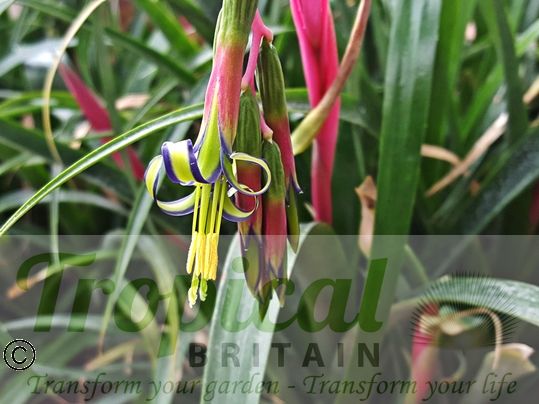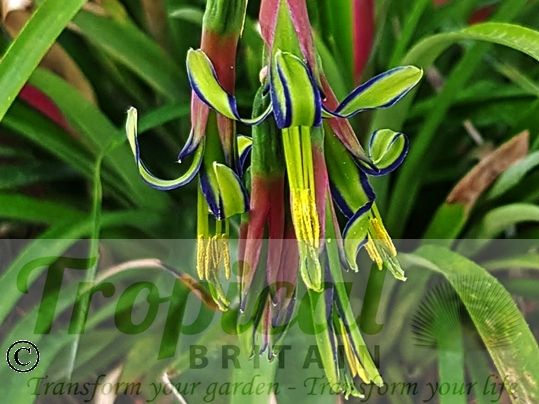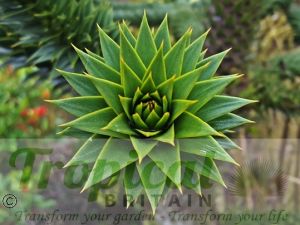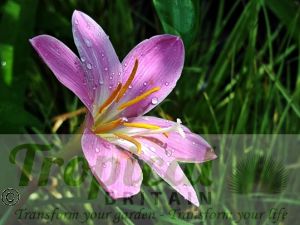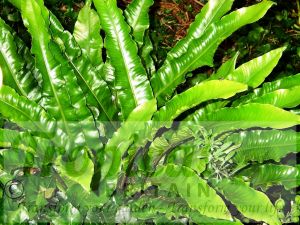One of the easiest Bromeliads to grow and – perhaps more importantly – one of the hardiest. I have grown Billbergia nutans outside through every British winter for more than 25 years. It has experienced every imaginable degree of neglect and still it keeps on surviving – and flowering – year after year. It offsets so freely that you can afford to experiment with it and it is particularly well suited to being given an epiphytic perch in the crook of a tree or the old petiole of a Trachycarpus palm. From such a jungly vantage point it sprays out in a wonderful burst of long thin strappy foliage cascading down the trunk like some exotic botanical spider and exploding in late spring and early summer with the most exquisite miniature flowers imaginable. Held aloft on long delicate bracts of soft pink, the clusters of small pendulous flowers have green petals edged with an astonishing tone of metallic-blue and are completed by a dangling set of yellowish anthers. Yet for all its jewelled beauty, to talk of the cultivation requirements of this old-warhorse-of-a-hardy-exotic, is for me somewhat anachronistic, as I tend just to give it a little soil, put it somewhere sheltered and then leave it to get on with life, coming back - every once in a while - to enjoy the flowers. It prefers dappled shade, reasonable overhead shelter from a canopy of larger plants and a well-drained, humus-rich, slightly acidic soil.
It has a very small root system and it is this smallness of this root system and its ability to thrive on so little that lends itself to being planted as an epiphyte, where it often grows in its native countries; Brazil, Argentina and Uruguay. However because of this same small root system, you will need to ensure they don't dry out if planting as an epiphyte. If you do plant it in a pot it should be in a small one. Of course you can also have it inside as a house or conservatory plant where its flowering cycle may tend to be more regular with such pampered treatment but for an ‘instant exotic’ look of epiphytic-festooned jungle, Billbergia nutans is impossible to beat.
A grove of Trachycarpus bedecked with this delightful little gem is a very magical place.
Additional Information
| Order | Poales |
|---|---|
| Family | Bromeliaceae |
| Sub-Family | Bromelioideae |
| Geographical Origin | Brazil, Uruguay, and Argentina |
| Cultivation | Partial shade. Plants will turn pinkish-red if exposed to too much sun in spring or summer. Keep moist in the summer, although they don't need huge amounts of water as they have a small root system |
| Eventual Height | 40 cm |
| Eventual Spread | 20 cm |
| Hardiness | Probably the hardiest Bromeliad. My plants have survived down to -14 C but they don't exactly enjoy it much |
-
Top notch!I ordered two of these, both came exceedingly well packed and in great health. Heaps of pups on both as well. Very good size! Can't wait to get in tucked into a nook somewhere. Lots of helpful information on the website as well! Really chuffed.
Posted on
-
GreatGreat little plant, looks strong and healthy, can't wait to plant it on the trunk of one of my tree ferns
Posted on
-
Very Healthy Great QualityLots of pups coming through, well packaged and very healthy plant, looking forward to growing it on
Posted on
-
Lovely plant, excellent serviceA beautiful striking plant, delivered in excellent condition with first class customer service! Thank you.
Posted on
-
Fantastic plantsWell packed healthy plants with lots of baby offsets. Thank you very much
Posted on
-
And a third...Three nutans in, they're all excellent examples. about 30cm high growth, very happy plants.
Posted on
-
Another bushy plantI came back for a second, which is equally plump and very healthy.
Posted on
-
Voluptuous delightful plantThis is the first bromeliad I've bought in probably 10 years and I think you may have started something...
A great quality plant, lots of new offsets and I can't wait for next year to hopefully see that spectacular flower.
Living nestled in an old apple tree.Posted on
-
many thanksGreat plant
Posted on
-
Sadly It Did Not SurviveSadly my plant did not survive our winter (Scotland). I overwintered it in the greenhouse and it lasted through until we had a lengthy spell of sub zero temperatures at the beginning of the year.
Posted on

Free DELIVERY
ON ALL ORDERS OVER £99THIS OFFER IS VALID ON ALL OUR STORE ITEMS.

